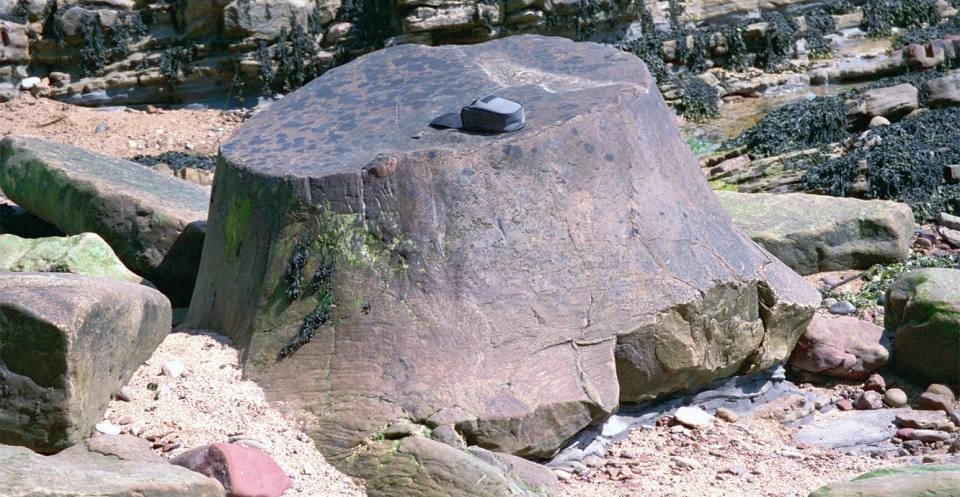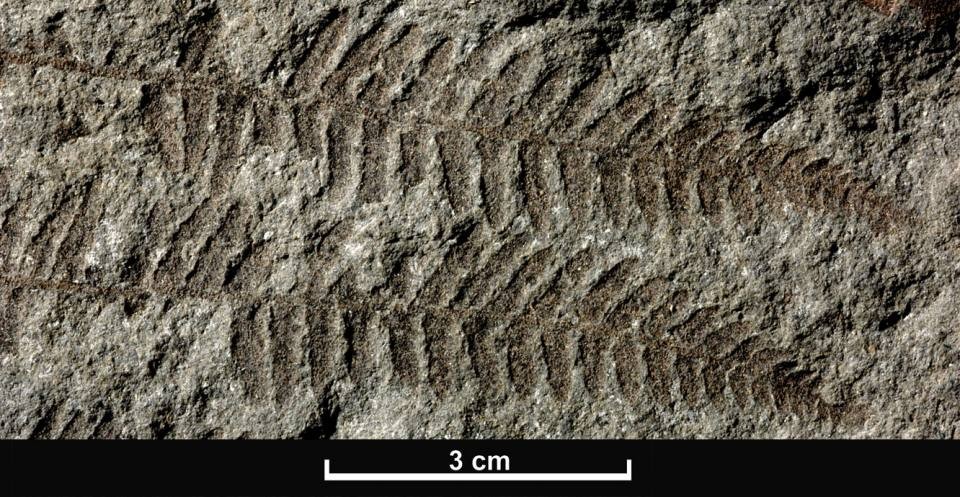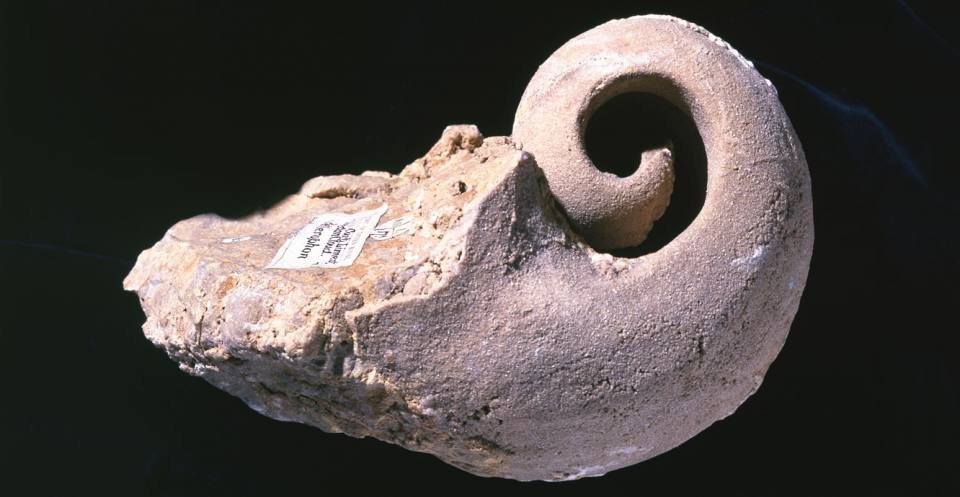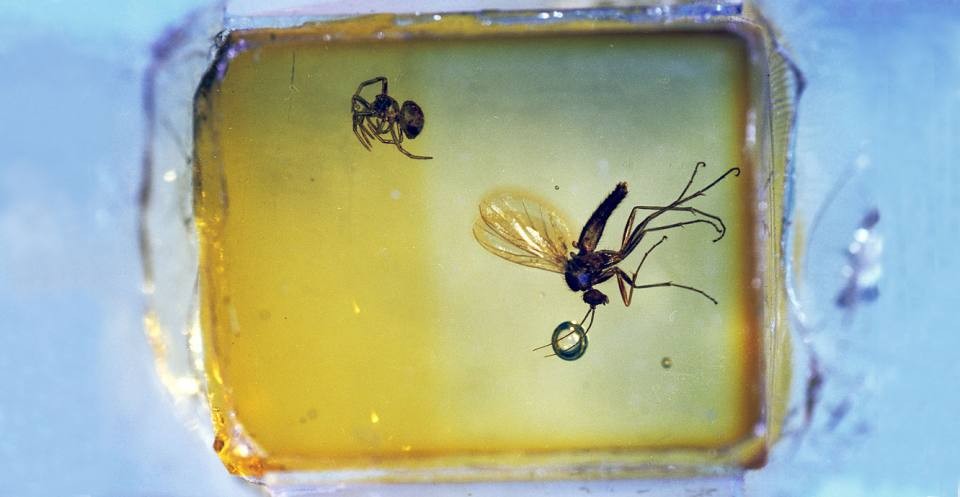Fossils offer an invaluable window into Earth’s history, revealing insights into past life forms, environmental changes, and the processes of evolution. At LEARNS.EDU.VN, we delve into the fascinating world of paleontology, exploring the myriad lessons these ancient relics hold, providing resources and expert guidance to unravel the mysteries of the past. Embark on a journey through geological time, discovering how fossils serve as time capsules, preserving evidence of extinct species, ancient climates, and pivotal moments in our planet’s story, enhancing your understanding of evolution and geological timelines.
1. What Are Fossils and Why Are They Important?
Fossils are the preserved remains or traces of ancient organisms, typically over 10,000 years old, offering a unique glimpse into the history of life on Earth. Their significance lies in providing tangible evidence of evolution, past environments, and the interconnectedness of life.
Fossils are more than just old bones; they are snapshots of ecosystems long gone, revealing how life has adapted and changed over millions of years. Studying fossils allows us to:
-
Understand Evolution: Fossils provide direct evidence of evolutionary transitions, showing how species have changed over time.
-
Reconstruct Past Environments: Fossilized plants and animals can tell us about ancient climates, geographies, and ecosystems.
-
Date Rocks and Geological Events: Certain fossils, known as index fossils, are used to date the rock layers in which they are found, helping us understand geological timelines.
-
Trace the Origins of Humans: Fossil discoveries have been crucial in tracing the lineage of humans and understanding our place in the tree of life.
-
Predict Future Environmental Changes: By studying how organisms responded to past environmental changes, we can gain insights into how current species might respond to climate change and other challenges.
The term “fossil” originates from the Latin word “fossilis,” meaning “unearthed,” highlighting their role as treasures hidden within the Earth. These relics of the past offer invaluable data for scientists and anyone curious about the story of life.
2. How Do Fossils Actually Form?
Fossilization is a rare process, requiring specific conditions to preserve organic material over vast stretches of time. The most common method involves rapid burial in sediment, which protects the remains from decay and destruction.
Here are the primary modes of fossil formation:
-
Petrification (Permineralization): This is the most common method. Minerals dissolved in groundwater fill the pores of the bone or shell. Over time, these minerals precipitate out of the water and harden, turning the organic material into stone. According to research from the University of California, Berkeley, permineralization often preserves the original structure of the organism in remarkable detail.
-
Compression: In this process, the organism is buried under layers of sediment, and the pressure from above flattens the remains. This is particularly common for plant fossils, where the resulting fossil is a dark imprint in the rock.
-
Molds and Casts: When an organism is buried in sediment, it may eventually decay completely, leaving a hollow space or mold. If this mold is later filled with minerals, it forms a cast, which is a replica of the original organism. Gastropods frequently appear as molds and casts because their shells dissolve easily.
-
Preserved Remains: This is the rarest form of fossilization. It occurs when an organism is preserved in its entirety, often in amber (fossilized tree resin), ice, or tar. Insects trapped in amber or woolly mammoths frozen in ice are examples of this type of fossil.
-
Replacement: In this process, the original material of the organism is gradually replaced by minerals. This can occur at the molecular level, preserving even the finest details of the organism.
Fossilization is more likely to occur in marine environments, where rapid burial by sediment is common. Less favorable environments include rocky mountaintops, where carcasses decay quickly.
3. What Different Types of Fossils Are There?
Fossils are not just limited to bones and shells. They come in a variety of forms, each providing unique insights into past life.
Here are the main types of fossils:
| Fossil Type | Description | Examples |
|---|---|---|
| Body Fossils | The preserved remains of an organism’s body, such as bones, shells, teeth, or leaves. | Dinosaur bones, ammonite shells, fossilized leaves |
| Trace Fossils | Evidence of an organism’s activity, such as footprints, burrows, coprolites (fossilized feces), or nests. | Dinosaur footprints, worm burrows, fossilized dung |
| Mold Fossils | A hollow impression left by an organism that has decayed. | Molds of shells or snails |
| Cast Fossils | A replica of an organism formed when a mold is filled with minerals. | Casts of ammonites or trilobites |
| True Form Fossils | The actual remains of an organism preserved in amber, ice, or tar. | Insects in amber, woolly mammoths in ice |
| Chemical Fossils | Chemical compounds found in rocks that indicate the presence of ancient life. | Biomarkers, such as lipids or pigments, that are unique to certain organisms |
| Microfossils | Microscopic fossils, such as foraminifera, pollen grains, or diatoms. | Foraminifera used in oil exploration, pollen grains used to reconstruct past vegetation |
| Index Fossils | Fossils that are used to date rock layers due to their widespread distribution and limited time range. | Ammonites, graptolites |




Each type of fossil provides unique information about the past. Body fossils give us direct evidence of an organism’s anatomy, while trace fossils tell us about its behavior. Chemical fossils can reveal the presence of ancient life even when no physical remains are found.
4. What Can Fossils Tell Us About Evolution?
Fossils provide critical evidence for the theory of evolution, demonstrating how life has changed over millions of years. They allow us to trace the lineage of species, identify transitional forms, and understand how organisms have adapted to different environments.
Key insights into evolution from fossils include:
-
Transitional Forms: Fossils of transitional forms show the intermediate stages between ancestral species and their descendants. Archaeopteryx, for example, is a famous transitional fossil that exhibits characteristics of both dinosaurs and birds, providing evidence for the evolutionary link between these groups.
-
Ancestral Relationships: By comparing the anatomy of different fossils, we can reconstruct the evolutionary relationships between species. For example, the fossil record shows that whales evolved from land-dwelling mammals, with transitional forms like Pakicetus and Ambulocetus exhibiting features intermediate between these groups.
-
Adaptive Radiations: Fossils can reveal how a single ancestral species can diversify into many different forms, each adapted to a different ecological niche. The Cambrian explosion, for example, was a period of rapid diversification in marine life, with many new body plans appearing in the fossil record.
-
Extinction Events: The fossil record also shows that many species have gone extinct throughout Earth’s history. These extinction events have often been followed by periods of rapid evolution, as new species fill the ecological niches left vacant by the extinct ones.
According to research published in “Nature,” the fossil record provides compelling evidence for the theory of evolution, demonstrating the ongoing process of adaptation and diversification that has shaped life on Earth.
5. How Do Fossils Help Us Understand Past Climates?
Fossils are valuable indicators of past climates, providing insights into temperature, rainfall, vegetation, and other environmental conditions. By studying the types of fossils found in a particular location, we can reconstruct the climate of that area millions of years ago.
Here are some ways fossils help us understand past climates:
-
Plant Fossils: Fossilized leaves, pollen grains, and wood can tell us about the types of plants that grew in a particular area, which in turn provides information about temperature and rainfall. For example, the presence of fossilized palm leaves in a location indicates a warm, tropical climate.
-
Animal Fossils: The types of animals found in a fossil assemblage can also provide clues about climate. For example, the presence of fossilized coral reefs indicates a warm, shallow marine environment.
-
Isotopes: The isotopes of certain elements, such as oxygen and carbon, can be used to determine the temperature and salinity of ancient oceans. These isotopes are incorporated into the shells of marine organisms, which are then preserved in the fossil record.
-
Growth Rings: The growth rings of fossilized trees can provide information about past climate variability, such as droughts or periods of rapid growth.
According to a study published in “Science,” fossil evidence has been crucial in reconstructing past climate changes and understanding the relationship between climate and life on Earth.
6. How Are Fossils Used to Date Rocks?
Fossils are essential tools for dating rocks, helping geologists to construct a timeline of Earth’s history. Certain fossils, known as index fossils, are particularly useful for this purpose due to their widespread distribution and limited time range.
Here’s how fossils are used to date rocks:
-
Index Fossils: Index fossils are species that lived for a relatively short period of time and were geographically widespread. When an index fossil is found in a rock layer, it indicates that the rock layer is the same age as the time period in which the species lived. Ammonites, for example, are excellent index fossils for the Mesozoic Era.
-
Fossil Assemblages: Even if no index fossils are present, the overall assemblage of fossils in a rock layer can provide clues about its age. By comparing the fossils in a rock layer to those in other rock layers of known age, geologists can estimate the age of the unknown rock layer.
-
Radiometric Dating: Radiometric dating methods, such as carbon-14 dating and uranium-lead dating, can be used to determine the absolute age of rocks. However, these methods are often used in conjunction with fossil evidence to provide a more accurate and complete picture of Earth’s history.
According to the Geological Society of America, fossils are one of the most important tools for dating rocks and understanding geological history.
7. What Are Trace Fossils and What Can They Tell Us?
Trace fossils are not the remains of an organism’s body, but rather evidence of its activity. These fossils can include footprints, burrows, coprolites (fossilized feces), nests, and other traces of behavior.
Trace fossils provide valuable insights into the behavior, ecology, and evolution of ancient organisms. They can tell us:
-
How Organisms Moved: Footprints can reveal how fast an organism moved, whether it walked on two legs or four, and how its feet were shaped.
-
How Organisms Fed: Burrows can indicate how organisms searched for food, while coprolites can reveal what they ate.
-
How Organisms Interacted: Nests can provide information about how organisms cared for their young, while bite marks on bones can indicate predator-prey relationships.
-
How Ecosystems Functioned: By studying the distribution and abundance of trace fossils, we can reconstruct ancient ecosystems and understand how they functioned.
According to research published in “Palaios,” trace fossils provide a unique window into the behavior of ancient organisms, complementing the information provided by body fossils.
8. Where Are Fossils Typically Found?
Fossils are typically found in sedimentary rocks, which are formed from the accumulation of sediment over time. These rocks can be found in a variety of environments, including:
-
Marine Environments: Marine environments, such as oceans, seas, and lakes, are particularly rich in fossils due to the abundance of life and the rapid burial of sediment.
-
Riverbeds and Floodplains: Riverbeds and floodplains can also be good places to find fossils, as they are often subject to periodic flooding and sedimentation.
-
Deserts: Deserts may seem like unlikely places to find fossils, but they can actually be quite productive due to the arid climate, which slows down the rate of decay.
-
Caves: Caves can also preserve fossils, as they provide a sheltered environment that protects remains from the elements.
Some of the most famous fossil sites in the world include the Burgess Shale in Canada, the Messel Pit in Germany, and the La Brea Tar Pits in Los Angeles.
9. Who Studies Fossils and What Do They Do?
Paleontologists are scientists who study fossils to understand the history of life on Earth. They come from a variety of backgrounds, including geology, biology, and anthropology.
Paleontologists do a variety of things, including:
-
Excavating Fossils: Paleontologists often work in the field, excavating fossils from rock formations.
-
Identifying and Classifying Fossils: Once fossils have been excavated, paleontologists identify and classify them based on their anatomy and other characteristics.
-
Reconstructing Ancient Organisms: Paleontologists use fossils to reconstruct the appearance and behavior of ancient organisms.
-
Studying Evolutionary Relationships: Paleontologists study the evolutionary relationships between different species, using fossils to trace the lineage of life.
-
Reconstructing Past Environments: Paleontologists use fossils to reconstruct the climates, ecosystems, and geographies of the past.
Paleontologists play a crucial role in our understanding of the history of life, providing insights into evolution, climate change, and the interconnectedness of life on Earth.
10. What are Some Famous Fossil Discoveries?
Throughout history, numerous fossil discoveries have revolutionized our understanding of life on Earth. Some of the most famous examples include:
-
Archaeopteryx: This transitional fossil, discovered in Germany in the 19th century, showed the link between dinosaurs and birds, providing strong evidence for evolution.
-
Lucy: This hominin fossil, discovered in Ethiopia in 1974, was one of the most complete skeletons of an early human ancestor ever found.
-
Tiktaalik: This transitional fossil, discovered in Canada in 2004, showed the link between fish and tetrapods (four-legged animals), providing insights into the evolution of land-dwelling vertebrates.
-
Sinosauropteryx: This dinosaur fossil, discovered in China in 1996, was the first to be found with evidence of feathers, further supporting the dinosaur-bird link.
-
Burgess Shale Fossils: This collection of fossils, discovered in Canada in the early 20th century, revealed a remarkable diversity of marine life from the Cambrian period, providing insights into the early evolution of animals.
These and many other fossil discoveries have transformed our understanding of the history of life, revealing the vastness and complexity of the evolutionary process.
11. What Are the Ethical Considerations of Fossil Collecting?
Fossil collecting can be a rewarding hobby, but it also raises ethical considerations. It’s important to collect fossils responsibly, respecting both the environment and the scientific value of the fossils.
Here are some ethical considerations to keep in mind:
-
Obtain Permission: Always obtain permission from the landowner before collecting fossils on private property.
-
Follow Regulations: Be aware of any regulations regarding fossil collecting in your area. Some areas may be protected, and fossil collecting may be prohibited or restricted.
-
Collect Responsibly: Collect fossils in a way that minimizes damage to the surrounding environment. Avoid disturbing vegetation or creating erosion.
-
Document Finds: Keep detailed records of where you found each fossil, including the location, date, and geological context. This information is essential for scientific research.
-
Donate to Science: Consider donating significant fossil finds to a museum or university for scientific study. This will ensure that the fossils are properly preserved and made available to researchers.
-
Avoid Commercial Exploitation: Avoid collecting fossils for commercial purposes. Selling fossils can encourage irresponsible collecting and damage to fossil sites.
By following these ethical guidelines, you can enjoy fossil collecting while also contributing to the preservation and understanding of Earth’s history.
12. How Can I Get Involved in Paleontology?
If you’re fascinated by fossils and want to get involved in paleontology, there are many ways to do so, regardless of your age or background.
Here are some ways to get involved:
-
Take Courses: Take courses in geology, biology, or paleontology at a local college or university.
-
Join a Fossil Club: Join a local fossil club or society. These groups often organize field trips, lectures, and other events.
-
Volunteer at a Museum: Volunteer at a museum or natural history museum. Many museums have paleontology departments that need volunteers to help with fossil preparation, curation, and education.
-
Participate in Excavations: Participate in paleontological excavations. Many universities and museums offer opportunities for volunteers to participate in field research.
-
Read Books and Articles: Read books and articles about paleontology to learn more about the field.
-
Visit Fossil Sites: Visit fossil sites and museums to see fossils in person and learn about the history of life.
-
Share Your Passion: Share your passion for paleontology with others. Talk to your friends and family about fossils, give presentations at schools or community groups, or start a blog or social media account about paleontology.
Paleontology is a fascinating and rewarding field, and there are many ways to get involved, whether you’re a student, a hobbyist, or a professional scientist.
13. What New Technologies Are Being Used in Paleontology?
Paleontology is a field that is constantly evolving, with new technologies being developed all the time. These technologies are helping paleontologists to make new discoveries and gain a deeper understanding of the history of life.
Here are some of the new technologies being used in paleontology:
| Technology | Description | Applications |
|---|---|---|
| CT Scanning | Computed tomography (CT) scanning is a non-destructive imaging technique that uses X-rays to create three-dimensional images of fossils. | Studying the internal anatomy of fossils without damaging them, identifying hidden structures, and creating virtual models of fossils. |
| 3D Printing | 3D printing is a technology that allows paleontologists to create physical replicas of fossils from digital models. | Creating replicas of fragile or rare fossils for study and display, restoring damaged fossils, and creating educational models. |
| Geographic Information Systems (GIS) | GIS is a computer system that allows paleontologists to map and analyze the distribution of fossils. | Identifying patterns in fossil distribution, understanding the relationship between fossils and their environment, and predicting where new fossils might be found. |
| DNA Analysis | DNA analysis is a technique that allows paleontologists to extract and analyze DNA from fossils. | Studying the evolutionary relationships between extinct and living species, understanding the genetic makeup of extinct organisms, and tracing the spread of diseases. |
| Artificial Intelligence (AI) | AI is being used to automate tasks such as fossil identification and reconstruction. | Quickly identifying and classifying fossils, reconstructing damaged or incomplete fossils, and creating realistic simulations of ancient organisms. |
These new technologies are revolutionizing paleontology, allowing scientists to make new discoveries and gain a deeper understanding of the history of life.
14. How Does Fossil Research Help Us Understand Climate Change?
The study of fossils is crucial for understanding climate change. By examining past environmental conditions and how organisms responded to them, we can gain insights into current and future climate scenarios.
Here’s how fossil research helps us understand climate change:
-
Past Climate Reconstruction: Fossils, especially plant and marine organism fossils, provide data about past temperatures, CO2 levels, and sea levels. This data is used to reconstruct historical climate conditions.
-
Species Response to Climate Changes: Fossils show how species have adapted, migrated, or gone extinct in response to past climate changes. Understanding these responses can help predict how current species might react to ongoing climate changes.
-
Understanding Biodiversity Loss: The fossil record reveals past extinction events caused by climate change, helping us understand the potential impacts of current climate change on biodiversity.
-
Long-Term Perspective: Fossils provide a long-term perspective on climate change, revealing patterns and trends that wouldn’t be apparent from short-term observations.
According to the Intergovernmental Panel on Climate Change (IPCC), understanding past climate changes through fossil research is vital for projecting future climate scenarios accurately.
15. What Are Some Common Misconceptions About Fossils?
There are several common misconceptions about fossils. Addressing these misunderstandings helps promote a more accurate understanding of paleontology.
Here are some common misconceptions:
-
All Fossils Are Bones: Many people think fossils are only bones, but fossils can be any preserved remains or traces of ancient life, including plants, insects, and even footprints.
-
Fossils Are Always Dinosaurs: While dinosaur fossils are popular, fossils represent a vast array of organisms from different time periods.
-
Fossilization Is Common: Fossilization is a rare process that requires specific conditions, so only a tiny fraction of organisms become fossils.
-
Fossils Are Worth a Lot of Money: While some rare fossils can be valuable, most are not. The true value of fossils lies in their scientific significance.
-
Paleontology Is Only About Dinosaurs: Paleontology is a broad field that encompasses the study of all ancient life, not just dinosaurs.
Addressing these misconceptions helps promote a more accurate understanding of paleontology and the importance of fossil research.
FAQ About Fossils
Here are some frequently asked questions about fossils:
-
What is the oldest fossil ever found? The oldest fossils are microscopic bacteria found in rocks from Western Australia, dating back approximately 3.5 billion years.
-
How long does it take for a fossil to form? Fossilization can take anywhere from thousands to millions of years, depending on the conditions.
-
Can soft tissues be fossilized? Yes, but it’s rare. Soft tissues can be preserved under exceptional conditions, such as in amber or in oxygen-free environments.
-
What is an index fossil? An index fossil is a fossil that is used to date rock layers due to its widespread distribution and limited time range.
-
How are fossils excavated? Fossils are excavated carefully using tools like brushes, chisels, and dental picks. The process requires patience and precision to avoid damaging the fossil.
-
What do paleontologists do with fossils after they are excavated? Paleontologists clean, identify, and study fossils to learn about ancient life, evolution, and past environments.
-
Are fossils only found in museums? No, fossils can be found in many places, including rock formations, riverbeds, and deserts.
-
What is the difference between a paleontologist and an archaeologist? Paleontologists study ancient life, while archaeologists study human history and culture.
-
Can fossils help us predict the future? Yes, by studying how organisms responded to past environmental changes, we can gain insights into how current species might respond to future climate change and other challenges.
-
How can I learn more about fossils? You can learn more about fossils by taking courses, joining a fossil club, volunteering at a museum, or reading books and articles about paleontology. LEARNS.EDU.VN offers numerous resources and educational materials to further your understanding.
Discover the past and unlock the secrets of Earth’s history. Fossils are time capsules that connect us to the origins of life and the evolution of our planet.
Are you eager to delve deeper into the world of fossils and paleontology? Visit LEARNS.EDU.VN today to explore our comprehensive resources, expert articles, and engaging courses designed to ignite your passion for learning. From detailed guides on fossil identification to virtual tours of famous fossil sites, LEARNS.EDU.VN is your gateway to unlocking the mysteries of the past. Join our community of learners and start your journey of discovery now. Contact us at 123 Education Way, Learnville, CA 90210, United States, or reach out via Whatsapp at +1 555-555-1212. Your adventure into Earth’s ancient history begins at learns.edu.vn.
